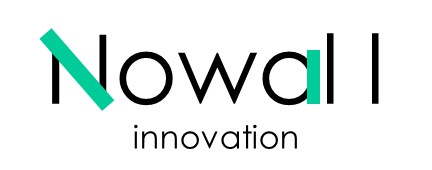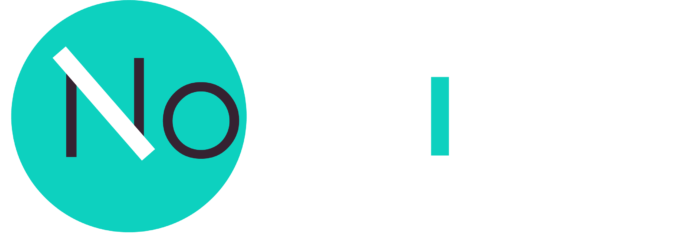Full translated version of the article originally published in Forbes France on 11/1/2019 under the title “La Valorisation Des Datas En Entreprise, Comment Faire?”.
In the digital age, many business models are being questioned and redefined according to new rules. Among these new rules emerges the monetization of data, personal or not. So is the data the new green gold? Do the so-called “data-driven” models belong to communicators’ and consultants’ verbatim or is it a reality that is gradually taking shape in companies?
To explore this subject, we met Benoît Dageville, co-founder and CTO of Snowflake Computing. Created in 2012, the company, a fast-growing unicorn founded in the USA by French people, is well established in the global market for cloud architectures and data economics.
Digital transformation: what role do cloud architectures and data play?
Not all companies are in the same position in terms of digital transformation. In this respect, some large American companies or start-ups may be some time ahead of their European counterparts, which makes it possible to observe the use they make of the Cloud and data, but above all what it can bring them in their development. Is all this just communication “bullshit”? Or is there a real economic impact?
Traditional IT architectures (having your own servers and various network equipment), sometimes represent a heavy investment, where each decision can lock the way a company operates (and performs) for several months or even years. The cloud provides flexibility and allows IT architecture to be viewed as a service paid on a per-use basis, in a transparent way. The space used and the performance are only variables that can be configured as desired, which allows rapid access to a so-called “scalable” architecture. Managed by one or more external service providers, the cloud provides high security (with a multi-level coding system, data redundancy, automatic backups, etc.), controlled costs (you pay for what you use), flexibility (storage space, number of users, performance level, etc. as required). The Cloud has therefore finally convinced the market by its intrinsic advantages. The Cloud has indeed allowed companies to “let go of the horses”, by increasing the number of users of various business applications and the volume of data generated. Consequently, the interest of the Cloud does not stop there; it has made it possible to make new things possible while traditional systems sometimes limited or hindered any desire for progress.
It is therefore thanks to Cloud architectures in particular that it has become interesting (because it is inexpensive) to collect and store data (the famous “Big Data”)… to (perhaps) better exploit them.
If data storage, access, and transit, in complete security, are the first uses of the Cloud and data warehouses (such as simple tools or services), what about the actual exploitation of this data? Do they sleep? Or are they valued as assets, as suggested by data-driven business models?
Data exploitation: first a question of access and then of sharing
Snowflake is in direct contact with these new needs and real uses. According to Benoît Dageville, companies want to have ever wider access to precise indicators based on their data. It is becoming attractive for them to base their governance (and therefore their decisions) on data (storage, access) and the analysis of this data (calculations and algorithms operated on this data). The ease of sharing their data, in a secure way, with their ecosystem (customers, partners) is an increasingly emerging demand. This is a delicate and relatively complex issue since each batch of data does not necessarily serve the same projects or recipients, does not require the same operations or processing.
In response to this request, Snowflake Computing launched Private Data Exchange to break down companies’ internal silos. The solution allows centralized access and analysis of corporate data to a single, secure point, allowing companies and organizations to share data sets privately with defined groups of people within their ecosystem to collaborate, inform, or facilitate decision-making. Companies fully control the data sets and their level of access by users.
It seems that data are increasingly being considered as company assets. It is therefore not surprising that their first step is to use this data within their trusted ecosystem. This is a major step forward in data monetization and the advent of “data-driven” governance models that go beyond the company’s traditional silos.
Data economics: the next digital revolution?
Serving internal governance, data become assets that are already gaining value in a well-identified circle of stakeholders.
Some companies go even further by integrating this data into their direct or indirect revenue generation model. They are looking for solutions to exploit and monetize the data they have, and also want to be able to rely on new data sources to stimulate their activities.
Indeed, if data have a value within an actor’s ecosystem, they can potentially have value for other actors. It is even very likely that data, that are not yet used or that are not properly exploited, may have value for other ecosystems, and may then be the subject of exchange or trade. It is a way of thinking that has not yet been democratized, but whose growth is limited only by the desire to share and open some of its data to the outside world in a targeted and secure way. This is essentially a cultural barrier.
The still entrenched fear is that competitors will loot it. However, the technologies now in use allow for detailed control and traceability of the data used. Access can be opened or closed at any time.
A second obstacle to this form of data monetization is a lack of vision as to the richness that this data sharing can create for all actors. Two sets of data can, once pooled, generate an added value that exceeds their simple sum. New ways of thinking must, therefore, be developed to exploit these hidden opportunities. But here again, however, it is necessary to open up to sometimes unusual collaborations, with the cultural resistance that this entails.
Nevertheless, Snowflake’s managers are taking up the challenge, allowing their customers to explore these avenues, while freeing them from barriers such as cloud providers or geographical areas. Sharing is therefore potentially unlimited.
The company has launched a public data sharing platform (Snowflake Data Exchange) that marks a new step in the widespread use of data as business assets. The marketplace allows customers to connect to data from other companies, called data providers. Users can access, generate and discover new indicators from this data in a transparent and secure way. Unlike traditional data transfer via APIs or data extraction to the cloud, the data-sharing technology that is used improves the control and security of data exchanges, making their integration and query processing transparent.
Customers can then browse a catalog of data accessible in complete security and in real-time.
Suppliers can share data online and promote their data services to the community, creating new sources of revenue. They can make the data available to all customers or specific customers without having to create copies.
In view of these trends in data monetization, it seems clear that today’s data economy is primarily based on the issue of data governance.
About Snowflake
Snowflake raised $450 million in late 2018, bringing its value to $3.9 billion and placing the company in the top 25 most valued American IT companies.
The company deploys a data warehouse cloud solution based on partnerships with major cloud players (Amazon Web Services (AWS), Microsoft Azure, Google Cloud). This gives companies access to a unique cloud data architecture that is flexible, i.e. multi-cloud and multi-region.
Today, Snowflake is present in the USA, Europe, and Asia. The company employs 1500 people worldwide, 250 of whom work in Europe and has 2500 customers worldwide, 350 of whom work in Europe. The customer portfolio is growing steadily, by around 500 new customers per quarter. Among its customers are Netflix, Netgear, Office Depot, Yamaha, or in France, Kiloutou, Camaïeu, and many others.





